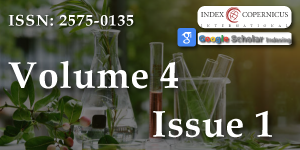Role of pollen morphology in taxonomy and detection of adulterations in crud drugs
Main Article Content
Abstract
Present paper communicates 42 species of angiosperms depicting characteristics of pollen grains as shape, color, exine ornamentations, and type of apertures. Pollen morphological characters are very important in plant identifications in field. Pollen surface features plays significant role in taxonomy and detection of crud drugs. Firsthand information is gathered from field and provided in this research article.
Article Details
Copyright (c) 2020 Ragho KS.

This work is licensed under a Creative Commons Attribution 4.0 International License.
Erdtman G. Pollen and spore morphology/ Plant taxonomy. Almavist&Wiksell/ Stockolm .The Ronolds Press Company. 1952.
Nair PKK. Pollen Morphology of Angiosperm. A historical & Phylogenetic study. Scholar Publication House. 1970.
Kshirsagar SR, Patil DA. Flora of Jalgaon District Maharashtra. 1st Edition. Bishen Singh Mahendra Pal Singh. 2008.
Patil DA. Flora of Dhule & Nandurbar districts: Maharashtra. Bishen Singh Mahendra Pal Singh. 2003.
Cooke T. Flora of residency of Bombay. Volume I & II. Botanical survey of India. 1958.
Kshirsagar SR, Borse KM. Embryology & Palynology. A textbook for T.Y. Bsc. Botany Student of North Maharashtra University. North Maharashtra Publication Dhule. 2015.
Naik VN. Taxonomy of Angiosperm. Tata Mc-Graw-Hill Publication Company Limited New Delhi. 1984.
Stuessy TF. Plant Taxonomy-The systematic evaluation of comparative data. Columbia University Press. 1990.
Devi S. Spores of Indian Ferns. Today & Tomorrow’s Printers & Publishers. 1977.
Bibi N, Hussain M, Akhtar N. Palynological study of some cultivated species of genus Hibiscus from North West Frontier Province (NWFP) Pakistan. Pak J Bot. 40: 1561-1569. 2008.
Fazal H, Ahmad N, Haider Abbasi B. Identification, Characterization, and Palynology of High-Valued Medicinal Plants. Scientific World Journal. 2013. PubMed: https://www.ncbi.nlm.nih.gov/pubmed/23844389

